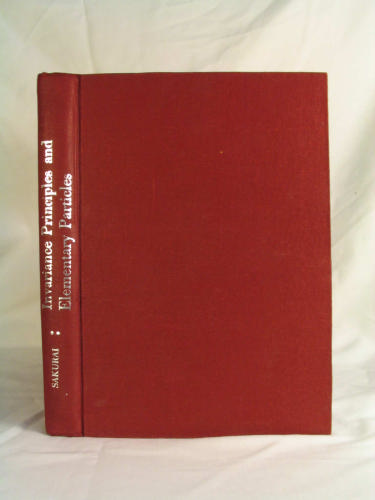Invariance Principles and Elementary Particles pdf download
Par huggins john le dimanche, mai 22 2016, 14:17 - Lien permanent
Invariance Principles and Elementary Particles. Sakurai J.J.

Invariance.Principles.and.Elementary.Particles.pdf
ISBN: 0691079870,9780691079875 | 338 pages | 9 Mb

Invariance Principles and Elementary Particles Sakurai J.J.
Publisher: PUP
Symmetry has been a powerful concept in physics for nearly 100 years, allowing scientists to find unifying principles and build theories that describe how elementary particles and forces interact now and in the early universe. If quantum mechanics is sacred, apparently other principles must go: either those of relativistic invariance, or of locality, or both. These light-cones give rise to Russian doll cosmology with cosmologies within cosmologies such that elementary particles formally correspond to the lowest level in the hierarchy. Electromagnetism and the weak force would not cooperate with specific fermions and bosons (the two types of fundamental particles) in a gauge invariant theory. Parton dynamics is associated with a given future/past light-cone. These principles clash when pushed to the extreme—the sharpest version of the problem arises when we collide two particles at sufficient energy to form a black hole. With the rapid development of the physics of elementary particles during the 1950s, new conservation laws were discovered that have meaning only on this subatomic level. Basically this means that according to pre-higgs Pretty basic stuff here but it is important to note that this principle applies across the board, from a marble rolling around in a bowl until it find the bottom to quarks oscillating on the lowest energy point on a gauge field. Hence a full Poincare invariance results meaning the emergence of conserved four-momentum identifiable as inertial four-momentum assignable to the preferred extremals of Kähler action defining Bohr orbits. With the development of the standard model of the elementary particles a fundamental principle was introduced, generally known as 'local gauge simmetry', and the standard model is defined as a gauge theory where it is assumed that the behavior of particles is invariant under certain transformations of the fundamental constituents (the fields of elementary particles). Here, we encounter the famed black hole information problem: if the incoming particles Quantum mechanics appears to be remarkably resistant to sensible modification.
Computation: Finite and infinite machines (Prentice;Hall series in automatic computation) pdf